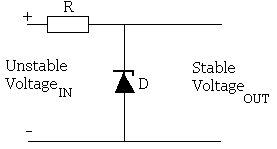bababui
Junior Member level 3
Hello,
I'm building a circuit that will protect my data collection equipment against suddent spikes in voltage and was wondering if someone can add some pointers.
I am reading in voltage signals that are typically on the order of 1-2 volts. My requirements are that the protection circuit will limit the voltage between either of the inputs and the ground, and between two signals to say 30V.
Spikes can come not only from signals being read but ground as well.
I'm building a circuit that will protect my data collection equipment against suddent spikes in voltage and was wondering if someone can add some pointers.
I am reading in voltage signals that are typically on the order of 1-2 volts. My requirements are that the protection circuit will limit the voltage between either of the inputs and the ground, and between two signals to say 30V.
Spikes can come not only from signals being read but ground as well.
